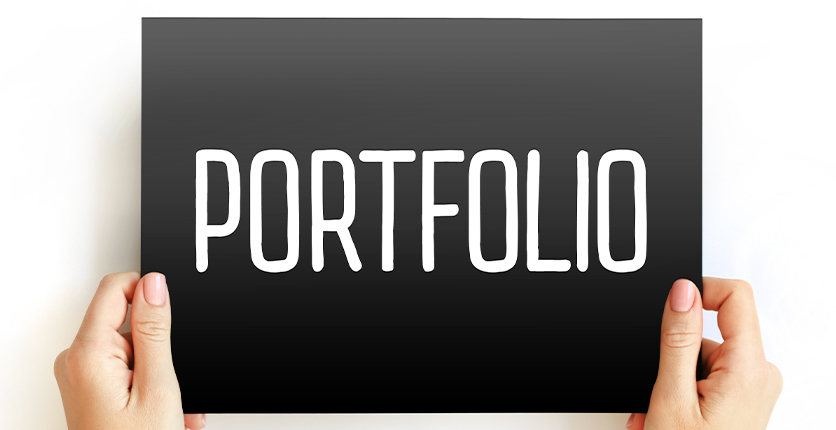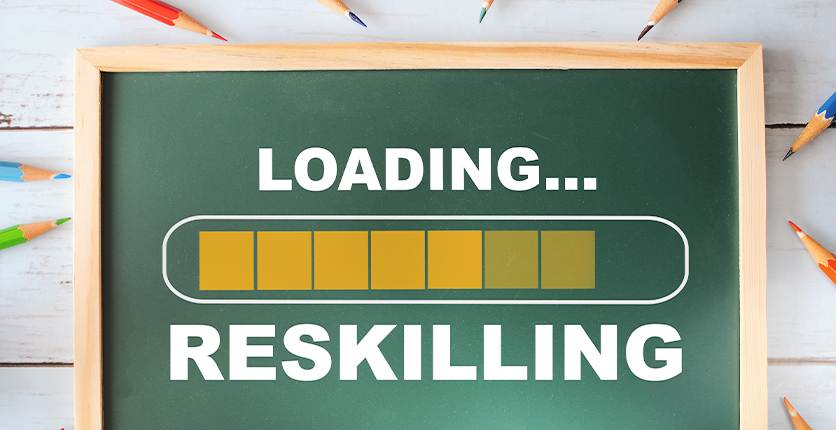A portfolio, as most of us know, typically showcases items such as certificates, awards, transcripts, letters of recommendation, samples of past projects, and works in progress – anything that highlights our abilities, skills, talents and areas of expertise. People who work in creative industries, such as graphic designers, photographers, artists, filmmakers and writers, for instance; architects; product managers; and advertising executives are often required to submit portfolios when applying for a job.
But have you heard about taking the portfolio approach to your career?
What is a career portfolio?

Traditionally, your work resumé shows your progression along one career path. If you’re a marketing professional applying for a marketing director job, for example, your resumé might list your relevant educational qualifications, such as a marketing diploma or degree, and all your professional roles in the industry, from your first position as a marketing intern to your next one as a marketing executive, followed by, perhaps, a senior marketing manager role. Your resumé would likely reflect everything you’ve achieved in these jobs, such as marketing campaigns you’ve successfully executed and big brands you’ve collaborated with. Everything on those few pages would also reflect all the usual skills and experience one needs for a senior marketing job – an understanding of consumer psychology, knowledge of digital marketing and social media platforms, interpersonal and communication skills, analytical and critical thinking skills, creativity, and so on.
A career portfolio, on the other hand, showcases more than just an applicant’s usual, linear career path. Instead, it encompasses personal hobbies, travel experiences, mentorships and even career gaps, all of which give prospective employers an insight into the type of person you are.
A career portfolio is not to be confused with a “portfolio career”. The latter refers to a career that has encompassed a variety of related or unrelated jobs, rather than single job at one company. Perhaps you had no idea what you wanted to do after finishing university, so for the next several years, you job-hopped your way through various industries in order to figure out what you were good at or what would ignite your passion. Many people today have portfolio careers – we might be freelancers or gig workers for different companies, or we might have a side hustle on top of a full-time job. A portfolio career not only gives us new opportunities to make extra money; it also allows us to indulge personal passions, make use of our range of skills and achieve a work-life balance.
This portfolio concept to work isn’t new. It was introduced in the early 1990s by organisational behaviourist Charles Handy, who foresaw that employees would have to develop portable skillsets and diversify in order to meet the requirements of a future fast-changing workplace.
A career portfolio can help you as well as potential employers

The job landscape is evolving rapidly, and these days, most organisations are looking to hire people who have more than just elaborate job titles and degrees from elite universities.
According to performance coach Jason Ho from Strengths School, a company that helps multinational corporations discover the strengths of their people, employers want workers who can quickly adapt to changing environments and demonstrate that they are willing to lead and learn. More than knowing that their employees have the skills they need to do their job, employers want to understand what motivates and drives their people, how they deal with problematic situations and how they view their place in the world.
You can therefore think of a career portfolio as an approach to curating your professional journey and a celebration of your unique combination of interests, talents, experiences and skills. In addition to spotlighting your professional identity and potential, it reflects your personal brand, thereby helping you stand out from the competition, allowing you to make your mark and show potential employers what makes you, you.
“It gives employers a more expansive view of who you are, and it can be used for any role in almost any industry,” Jason adds.
A career portfolio is especially useful if you’re new to the workforce and don’t have much professional experience. You can still show your value to potential employers by detailing your passion projects, side hustles, social or environmental activism, volunteer work, and even social media activities, for example.
If the role you’re applying for requires qualities that can be difficult to measure, such as cultural awareness, discipline, compassion or resilience, look back at everything you’ve done so that you can decide what you have to offer. If you’ve backpacked around the world, that might tell potential employers that you’re open-minded, culturally sensitive, resourceful and resilient. If you’re a YouTuber or enjoy interacting with people on social media platforms, that might indicate digital savviness and an ability to engage others. If you build model cars or do jigsaw puzzles as a hobby, hiring managers may perceive you as someone who is focused, disciplined and meticulous.
Secured your job interview? Congratulations! Here are tips on how to have a successful session and what questions to ask.
How to present your career portfolio

You can compile your portfolio as a list or even as a detailed story. Jason recommends first going over all the activities, tasks or projects that you’ve done, whether while in school or in your personal life, that you feel would help potential employers understand you better and make you stand out as someone of value and who can make a positive difference – think community service, volunteer work, hobby club involvement, freelance roles, side gigs, caregiving, and so on.
“From here, you’ll start to see a pattern with regard to your strengths, interests, passions and abilities,” Jason explains.
For instance, you may notice that you are innovative or creative, have natural leadership skills, love collaborating with people, or know how to balance budgets or think on your feet.
Then, you can start to craft your portfolio, highlighting your special talents, experience and abilities and giving examples of how you employed these in your various projects and activities.
“Ultimately, your career portfolio is like your very own marketing brochure, so you need to think of how you’ll present it in a way that’s most appealing,” Jason says.
“You could pull out the highlights from all your different roles and activities, but be sure to angle them so that they’re relevant to the position you’re applying for. If you’re applying to multiple jobs across different industries, your overall portfolio narrative can be the same, but you should play up different strengths and qualities to suit the role.”
Finally, remember that your career portfolio is never fixed. As you acquire more skills and experience, as your talents and interests develop, and as you personally evolve, you should take the liberty to adjust your list and add to your personal story.
Find out more on how to improve your job skills, beyond taking courses.
Want more articles like this, and other lifestyle content right in your inbox? Download the new SAFRA mobile app and opt in for the eNSman Newsletter – you don’t need to be a SAFRA member to subscribe – and never miss another story!









